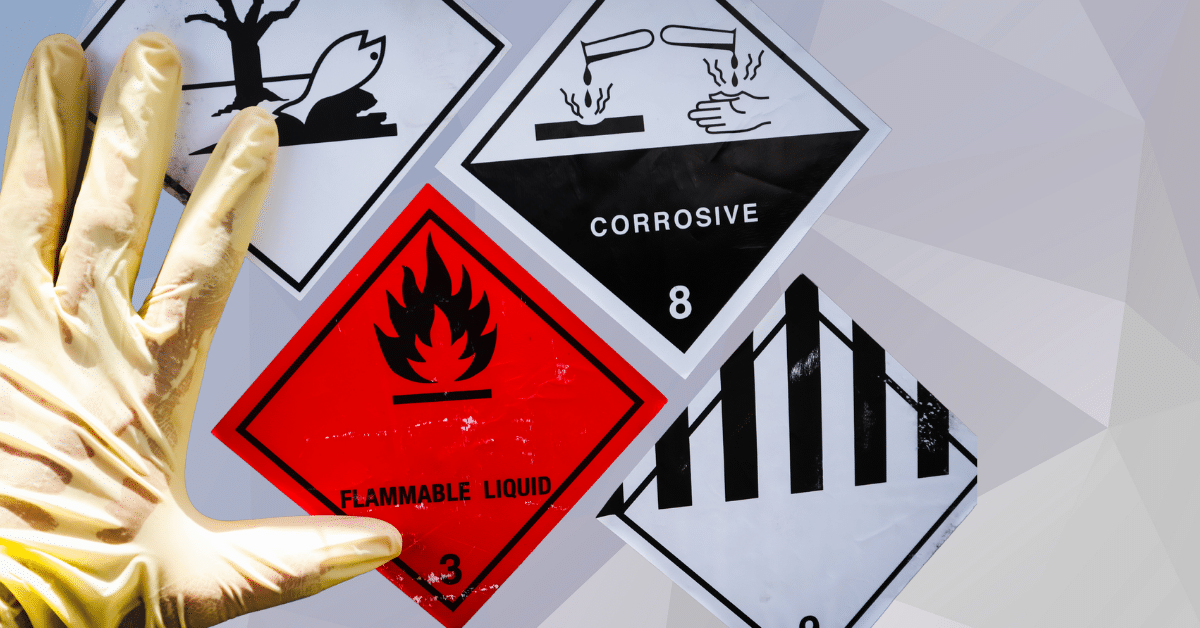10 Signs Of A Toxic Workplace Environment And How To Handle Them
We don’t want to start on a negative note, but this thing needs to be addressed immediately, right now, right away. According to a study by the American Institute of Stress, 83% of US workers report experiencing daily work-related stress.
While some stress is normal, other stress comes when your workplace becomes toxic and a breeding ground for negativity, affecting your mental health and work performance.
This blog will address this issue, providing ten signs of a toxic workplace environment and how to fight back against it.
Let’s start with the basics!
Save Thousands Of Dollars With Coggno Prime Subscription
What Exactly Is A Toxic Workplace?
A toxic workplace environment is one that hinders your ability to thrive, both personally and professionally. It’s characterized by unhealthy dynamics, negativity, and behaviors that can erode your mental well-being and job satisfaction.
The long-term effects of a toxic workplace are far-reaching. Chronic stress can lead to anxiety, depression, and even physical health problems. It can also significantly impact your productivity and motivation, ultimately affecting your career trajectory.
Must Read: Do You Work For a Bad Boss? Here’s How to Handle It
The Subtle Onslaught: 10 Signs Of A Toxic Workplace Environment And How To Fight Back
Below are the ten signs of a toxic workplace environment:
Toxic workplace checklist #1. Communication Breakdown: When Feedback Turns Into A Fear Tactic
Healthy workplaces foster open and honest communication. In a toxic environment, communication becomes a one-way street, often used to belittle or manipulate employees. You might experience:
- Constant criticism disguised as “feedback”: This “feedback” focuses on negativity and lacks constructive guidance.
- Micromanagement: Your boss controls every aspect of your work, leaving no room for autonomy.
- Yelling, insults, or passive-aggressive behavior: Professional communication takes a backseat to unprofessional outbursts or veiled hostility.
How to Handle It:
- Document specific instances of inappropriate communication.
- Address these issues directly with your manager calmly and professionally.
- If the behavior persists, consider seeking support from HR or exploring other employment options.
Toxic workplace checklist #2. The Blame Game: A Culture Of Pointing Fingers And Taking No Responsibility
A healthy team takes ownership of both successes and failures. In a toxic environment, blame becomes the go-to strategy, deflecting responsibility and creating a climate of distrust. Look out for:
- Colleagues throwing each other under the bus: Mistakes are met with accusations and finger-pointing instead of problem-solving.
- A lack of accountability: No one takes ownership of errors, leading to a constant cycle of negativity and missed opportunities.
- Credit being stolen: Your hard work goes unrecognized, while others take credit for your achievements.
How to Handle It:
Document your contributions clearly. Focus on solutions rather than assigning blame. If credit is stolen, calmly assert your role in the project or task.
Must Read: Prioritize Workplace Safety Training by Focusing on These Tips
Toxic workplace checklist #3. Where Gossip Reigns Supreme: A Breeding Ground For Rumors And Backstabbing
Offices should be places of collaboration, not breeding grounds for malicious gossip. A toxic workplace thrives on negativity, with rumors and backstabbing taking center stage. You might encounter:
- A constant flow of office gossip: Personal and professional information is used to undermine others and create a climate of distrust.
- Social cliques: Exclusion and favoritism create a hostile environment where collaboration is difficult.
- Passive-aggressive behavior: Indirect hostility and negativity create a tense and uncomfortable atmosphere.
How to Handle It:
Avoid gossip, limit interactions with negative colleagues, and focus on building positive relationships with trustworthy coworkers.
Toxic workplace checklist #4. When Work Becomes Your Life: Unrealistic Workloads And Zero Work-Life Balance
Work-life balance is crucial for maintaining well-being. A toxic workplace prioritizes work over everything else, leading to burnout and resentment. Watch out for:
- Unrealistic deadlines and overwhelming workloads: You’re constantly stressed and struggling to meet unreasonable expectations.
- Pressure to be available 24/7: Work bleeds into your personal life, making it difficult to disconnect and recharge.
- No respect for boundaries: Taking vacations or leaving work on time is seen as a sign of weakness.
How to Handle It:
- Set clear boundaries between work and personal life.
- Learn to prioritize tasks and communicate workload limitations to your manager.
- If these efforts fall short, consider exploring a new opportunity with a healthier work culture.
Toxic workplace checklist #5. When Passion Turns To Pessimism: A Culture Of Chronic Negativity
Highlight accomplishments as they happen and pair them with simple awards for employee recognition to celebrate individual and team milestones. A positive work environment fosters innovation and productivity. A toxic workplace, on the other hand, breeds negativity, draining motivation and enthusiasm. Watch out for:
- Constant complaining and negativity: A pervasive sense of pessimism hangs heavy, with colleagues focusing on what’s wrong rather than potential solutions.
- Low morale and lack of enthusiasm: Employees feel uninspired and disconnected from their work.
- A lack of recognition and appreciation: Positive contributions go unnoticed, further fueling negativity.
How to Handle It:
- Focus on the positive aspects of your job and your own accomplishments.
- Surround yourself with positive colleagues who uplift and motivate you.
- If possible, initiate team-building activities to foster a more optimistic atmosphere.
Toxic workplace checklist #6. The Power Play: Favoritism, Bullying, And Harassment
A healthy workplace values fairness and respect. A toxic environment can be rife with favoritism, bullying, or even harassment. Be aware of:
- Favoritism and unequal treatment: Certain employees receive preferential treatment, promotions, or opportunities based on factors unrelated to merit.
- Bullying or harassment: This can take many forms, from verbal abuse to intimidation to creating a hostile work environment.
How to Handle It:
If you witness or experience favoritism, bullying, or harassment, document the incidents meticulously. Report such behavior to HR immediately. Don’t hesitate to seek legal counsel if necessary.
Must Read: Bullying and Harassment Training Courses Online 2024
Toxic workplace checklist #7. The Wolf In Sheep’s Clothing: Passive-Aggressive Management
Effective leadership fosters open communication and clear expectations. In a toxic environment, managers might resort to passive-aggressive tactics to control employees, creating a confusing and stressful atmosphere. Look out for:
- Backhanded compliments or veiled criticism: Your manager undermines your confidence and achievements with disguised negativity.
- The silent treatment: Important information is withheld, making you feel frustrated and powerless.
- Mixed messages and unclear expectations: Tasks and deadlines are ambiguous, setting you up for failure.
How to Handle It:
Seek clarity on expectations and deadlines. If passive-aggressive behavior persists, document specific instances and consider discussing them professionally with your manager.
Communication Skills For Managers
Toxic workplace checklist #8. When Growth Stalls: Limited Opportunities And Stagnant Careers
A healthy workplace fosters professional development and growth. A toxic environment might offer limited opportunities for learning and advancement, hindering your career trajectory. Be aware of:
- A lack of training and development opportunities: Your employer shows little interest in investing in your skills and knowledge.
- Dead-end positions: There’s no clear path for advancement or career progression.
- Ideas and contributions ignored: Your valuable input is disregarded, stifling innovation and motivation.
How to Handle It:
- Take the initiative to develop your skills independently.
- Network with professionals outside your company.
- If growth opportunities remain scarce, consider exploring a new position that aligns with your career goals.
Toxic workplace checklist #9. When Safety Is Overlooked: A Lax Approach To Workplace Safety
A healthy workplace prioritizes employee safety and well-being. A toxic environment might neglect safety protocols, putting you at risk. Look out for:
- A lack of safety training or equipment: Your employer fails to provide proper training or necessary safety gear to perform your job effectively.
- Ignoring safety hazards: Safety concerns are brushed aside, prioritizing production over employee well-being.
- A culture of cutting corners: Safety protocols are disregarded to meet deadlines or reduce costs.
How to Handle It:
Report safety hazards immediately to your supervisor and HR. If your concerns are unheard of, it might be time to prioritize your safety and consider alternative employment options.
Toxic workplace checklist #10. When Ethics Take A Backseat: A Culture Of Dishonesty And Unethical Practices
A healthy workplace fosters integrity and ethical conduct. A toxic environment might encourage or tolerate unethical behavior, creating a sense of unease and distrust. Watch out for:
- Lying, cheating, or cutting corners: Normalizing or encouraging unethical practices to achieve results.
- A pressure to compromise your values: You’re expected to participate in activities that go against your ethical compass.
- Witnessing illegal or fraudulent behavior: Your employer engages in activities that violate the law or industry regulations.
How to Handle It:
If you witness or are pressured to participate in unethical behavior, document everything and report it to HR immediately. If your concerns are ignored or there’s a risk to your safety, prioritize your well-being and consider seeking new employment. Protecting yourself from retaliation is crucial. Familiarize yourself with whistleblower protection laws and consider seeking legal counsel if necessary.
Ethics In The Workplace Course
Combating A Toxic Workplace And Building A Thriving Career
Unethical behavior? We won’t leave you hanging there. Here’s how to conclude your fight against a toxic workplace and empower yourself to build a fulfilling career:
- Don’t be afraid to walk away: If reporting unethical behavior goes unheard or risks your safety, prioritize your well-being and consider seeking new employment.
Empowering Yourself: Resources And Support
Remember, you are not alone. Here are some resources to help you navigate a toxic workplace and build a rewarding career:
Coggno Anti-Toxic Workplace Training will equip you and your organization with the knowledge and skills to prevent and address toxic workplace environments. Coggno offers a comprehensive library of online courses and certifications designed to foster healthy workplace cultures.
These courses cover a wide range of topics, including:
- Identifying and addressing toxic behaviors
- Building effective communication skills
- Promoting a culture of respect and inclusion
- Managing stress and promoting well-being
Investing in anti-toxic workplace training can create a more positive and productive work environment for yourself and your colleagues.
Don’t Miss Out!
Don’t let a toxic workplace environment steal your joy and hinder your career. Take action today!
- Explore Coggno’s Anti-Toxic Workplace Training Solutions and empower yourself to build a thriving career.
- You deserve to work in a healthy and respectful environment. Don’t tolerate toxicity.
- Need Help? Coggno is here to support you. Contact our team for personalized guidance and resources.
Maximize Training, Minimize Costs With Coggno Prime
Also Read
Business Ethics Trends & Challenges In 2025: Solutions & Training
Top 7 Employee Benefits Trends For 2025: Attract And Retain Talent
Top 10 Negotiation Skills To Improve Your Power Closing A Deal (Definition & Important Tips)
How to Manage a Remote Team: 12 Remote Team Management Courses


















